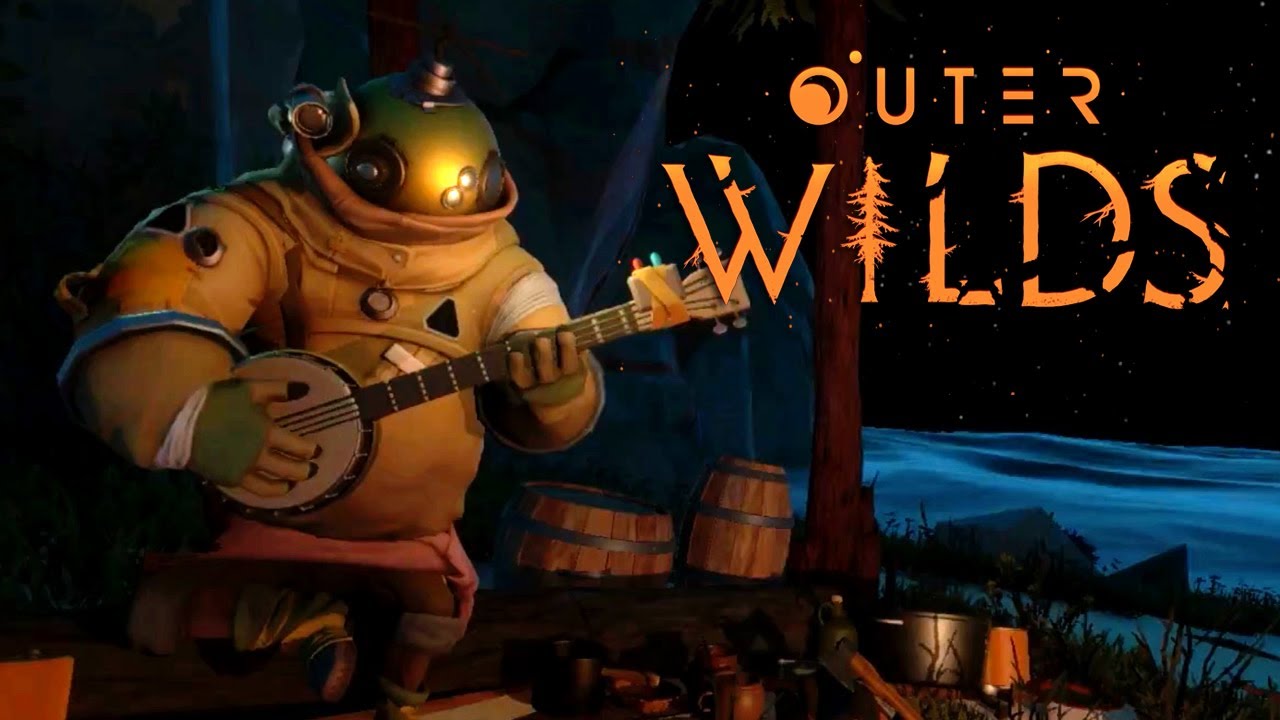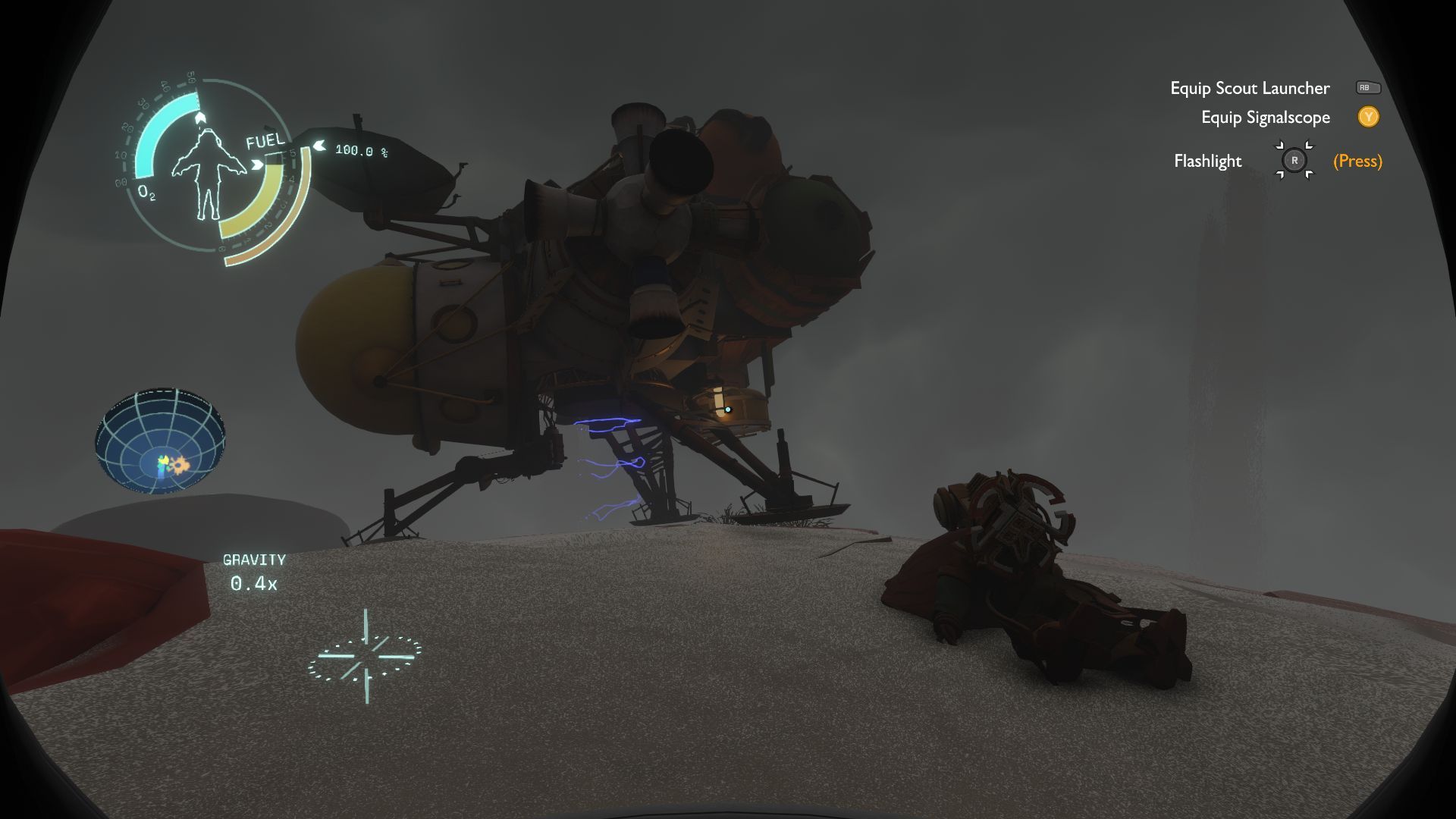
True discovery is a feeling that is difficult to replicate in video games. Countless worlds offer us knowledge and stories, so that we can stop and smell the roses and have the opportunity to understand them better, but this understanding is usually arbitrary and therefore often feels superficial. Outer Wilds, a space exploration simulation with puzzles and mystery stories, avoids this problem by foregrounding the story that is usually sprinkled in the background of games, making her feel valued. By turning knowledge into the core of the experience rather than a puzzle element, progression or side dish, it takes the process of learning about these worlds to a level rarely seen in games.
You control an alien astronaut/anthropologist exploring your solar system to unravel the secrets of the Nomai, a mysterious ancient race whose ruins dot every planet. You soon find yourself trapped in a surprisingly helpful Groundhog Day (or Majora’s Mask) style time loop, and it’s up to you to find a way out of it. This process leads to a long and complex puzzle, which is solved by exploring each of the system’s five planets, as well as several moons and other interesting locations. This simple premise develops into an interesting story (several, actually) that you discover along the way. The Nomai, like the Chozo from Metroid, the Protheans from Mass Effect, or a few other preceding races, seem unknown at first glance, but as you get to know them better through diaries and other notes, they seem distant – they are dead, after all – but still identifiable.
Uncovering the whole story seems like a daunting task, but once you board your spaceship and set off on your expedition, everything will work out just fine. Without a real tutorial, your home planet has a few practice areas, but these are entirely optional. It takes time to learn the rules of the world. I especially struggled a bit learning to pilot my spaceship, a small shuttle controlled by directional thrusters. While no math is required, Outer Wilds takes a physics-oriented approach to space. You have to keep track of your momentum relative to the planet you want to land on and take its orbit into account. It all controls well once you get the hang of it, but the “sink or swim” approach makes your first few runs more tedious than they need to be, as undershooting and overshooting planets wastes time. In some cases, this leads to a fatal crash that sends you back to the beginning, like Groundhog Day.
This lack of understanding makes every run, from the initial start to exploring previously hidden locations, exciting and a little terrifying. The solar system is small enough that you can land on any planet in a single 22-minute run, but humans are tiny and insignificant in comparison. It feels like anything could emerge from the inky blackness of void at any time, and there are some amazing moments ahead. If, like me, you don’t immediately feel at ease when swimming through underwater levels in many games, the experience of floating in space can instill a certain existential dread. However, if you’re willing to deal with it, this fear is almost always unfounded, and the exciting feeling of discovering a new place is always rewarding.

With exploration at the heart of Outer Wilds, each of the five planets serves as a mechanical and aesthetic showcase. Each planet has a distinct look and feel, not to mention mechanical concepts that complicate navigation and cause “natural” puzzles to get from point A to point B. From Giant’s Deep, a mostly aquatic planet with green oceans and sky-high whirlpools that could get in your way at any moment, to Brittle Hollow, a dying planet with a black hole at its center, each location feels unique and carefully crafted. … Over time, parts of the surface are absorbed, potentially blocking your path or sucking in and destroying your targets before they can be reached.
Time loops also play a key role in traveling the world and solving puzzles, as certain areas are only accessible at certain times. For example (mild spoiler!) at the start of a run, driving straight through one of the planets will appear as a giant desert, but as each loop progresses, the sand level gradually decreases, revealing new locations to explore. Stumbling across new territories by chance because you were in the right place at the right time can lead to some of the greatest discoveries. Every planet has the ability to truly surprise you, even when you thought you had it all figured out.
Again, “find” is the key word. You don’t find gear, and there are no clearly defined missions you need to complete. Just explore as much as you can, find, read, and use what you find until you finally know what to do, and keep looking and reading. For example, while exploring a lab on one planet, you might find that another world has a lab with information that can give you access to a new area, and you go looking for it. There is certainly a structure in that each piece of information helps you find one or two other specific pieces of information, but it’s not explicitly stated how to use each piece of information or where to go. You have to process the information yourself, and the act of piecing together the story step by step is at the heart of Outer Wilds. Understanding the world and its story is your progress, and each step forward feels like a true Eureka moment.
This all sounds very abstract, but there are several visual cues and other means to give you a sense of tangible progress. From the start, you’ll have a language translation tool that can turn the picturesque Nomai font into easy-to-read text. Like a well-used textbook, keywords are highlighted with each subsequent reading, letting you know you’re reading about important content that will play a key role in your search. And the most important details are summarized and stored in the ship’s log, remaining there even when time resets. The ship’s log is incredibly useful. I found a rhythm of checking the log at the start of every run to see what new details I’d found or rumors about places I didn’t know about yet. I was presented with open-ended topics that gave me inspiration for my next adventure.

Actual progress, however, is less obvious. The ship’s log can save you bullet points, but you often need more information to make a logical jump from one piece of information to the next. In one area, for example, you find a giant bone and some ancient notes that detail a species left behind by the Nomai tribe. This information will be crucial later, but the ship’s logs won’t tell you when or why this happened. Plus, once you know it, it’s up to you to apply that knowledge to navigate dangerous areas. I never had a hard time making the connection, but it’s worth thinking critically about everything you read and remembering what’s happening at each stage.
It also means that no one will tell you if you miss something. This is where things can get complicated and frustrating. Finding facts in the wrong order or approaching ruins from the wrong direction can make certain tasks seem impossible. Sometimes it’s easy to just look around and find what you missed, but puzzles can get tricky, especially later in the game where the entrances are hidden. The puzzles are usually pretty clear if you have all the information you need to solve them, but if you’re missing a piece, it’s hard to even know where to start. For example, one area of Brittle Hollow can only be accessed through a series of crystals, which you can walk along the underside of the planet’s hollow crust. If you haven’t yet found the area where the Crystal Path begins, wandering the planet blindly looking for an entrance or even flying to it will inevitably suck you into a black hole. If you stumble upon the right place at the wrong time, there’s a series of actions you can easily ignore.
In my rock bottom moment, I really realized how great the time loop is as a game mechanic. The 22-minute limit may seem prohibitive at first, but the loop lets you break up exploration into more manageable tasks and allows you to reset if you get stuck on a particular location or puzzle. It doesn’t necessarily help you solve puzzles or complete the story, but it certainly gives you room to take things at a slightly slower pace, catch your breath, and enjoy the ride.
However, I don’t blame Outer Wilds for the frustration these tedious puzzles cause. Given the way it processes information that reveals the solutions to these puzzles, I expect that people will start sharing the knowledge they find online, as in games like Fez, Dark Souls, and The Witness. I’ve spoken to several other authors about their experiences, and it’s really fun to share stories, especially to hear about and seek out things you haven’t yet discovered.
Verdict
Outer Wilds’ tricky exploration and puzzle-solving is definitely a matter of taste. Its very specific style of active storytelling is very different from the heavily guided open worlds that many of us think of when talking about non-linear gameplay. It can be confusing at times when events don’t unfold in the right direction, but the prevailing feeling is that you’re learning something new about history, or tracking down some facts that lead to totally unexpected events on a faraway planet, and although it’s true that these small glitches have been a problem so far,

Leave a Reply